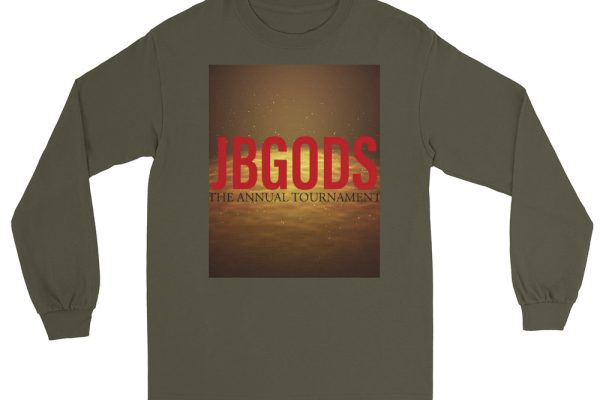A Comprehensive Guide to Chicago Weather, a meticulous exploration of the climatic conditions that define the Windy City. From the icy grips of winter to the sweltering heat of summer, this guide delves into the unique weather patterns shaped by Lake Michigan and the urban landscape. Whether you’re a resident bracing for the next temperature swing or a visitor planning your itinerary, this guide provides essential insights into navigating and embracing Chicago’s dynamic atmosphere.
- Chicago experiences four distinct seasons, each with its own set of weather characteristics influenced by Lake Michigan.
- Winter in Chicago brings snowfall and significant wind chill, while spring transitions into warmer temperatures with varied precipitation.
- Summer can be intensely hot and humid, demanding attention to heatwaves, whereas autumn offers a reprieve with crisp air and picturesque foliage.
- Staying weather-aware in Chicago involves understanding local meteorology, weather alerts, and utilizing technological advancements in forecasting.
- Preparation for Chicago’s weather includes having essential clothing for each season, emergency kits for power outages, and knowledge of safety tips for extreme conditions.
Understanding Chicago’s Climate

Chicago’s climate is characterized by a full range of weather conditions across its four distinct seasons. Winter brings the chill with temperatures often dipping below 0 Celsius, accompanied by snow that blankets the city in white. As the frost recedes, spring emerges with a mix of rain and sunshine, coaxing the greenery back to life. The warmth of summer follows, offering long days filled with heat and the occasional thunderstorm. Finally, autumn arrives, painting the cityscape with vibrant hues as the air turns crisp, signaling the approach of another winter cycle.
The transitions between these seasons can be abrupt, with each bringing its own set of weather patterns and temperatures. Residents and visitors alike must adapt to these changes, often within the span of a single week. The table below summarizes the average conditions one can expect in each season:
| Season | Temperature Range | Precipitation | Notable Weather Events |
| Winter | 20°F to 35°F (-6°C to 2°C) | Snow, Ice | Blizzards, Lake-effect snow |
| Spring | 35°F to 60°F (2°C to 16°C) | Rain, Thunderstorms | Sudden temperature shifts |
| Summer | Summer 60°F to 85°F (16°C to 30°C) | Thunderstorms, Humidity | Heatwaves |
| Autumn | 45°F to 70°F (7°C to 21°C) | Rain, Wind | Early frosts |
The beauty of Chicago’s climate lies in its dynamism; each season distinctly shapes the city’s character and the lifestyles of those who dwell within it. Embracing the seasonal shifts is part of the quintessential Chicago experience.
Lake Effect: How Lake Michigan Influences Weather
The phenomenon known as the ‘lake effect’ plays a pivotal role in shaping the weather patterns of Chicago. Lake Michigan’s vast expanse acts as a colossal heat reservoir, moderating the city’s climate throughout the year. During the winter months, the relatively warmer lake waters can lead to increased snowfall on the leeward side of the lake, as cold air moves over the warmer water, picking up moisture and heat.
The lake effect can cause sudden and significant weather shifts, particularly in areas close to the shoreline. This can result in localized weather events that are more intense than those further inland.
In the summer, the lake’s influence continues, often bringing cooler temperatures and a reprieve from the sweltering heat experienced further inland. The table below illustrates typical temperature variations between the lakeshore and areas just a few miles inland during summer months:
| Location | Average High (°F) | Average Low (°F) |
| Lakeshore | 75 | 65 |
| 5 miles inland | 80 | 70 |
Understanding the lake effect is crucial for residents and visitors alike, as it can impact travel plans and outdoor activities. Being aware of these microclimates ensures better preparation for the day’s weather.
Temperature Extremes: Preparing for the Highs and Lows
Chicago’s weather is as dynamic as the city itself, with temperature extremes that challenge even the hardiest residents. Winter’s chill can plunge well below freezing, while summer may bring sweltering heat. Preparing for these fluctuations is key to enjoying the city year-round.
- Winter: Layering is essential, with a focus on thermal insulation.
- Summer: Lightweight, breathable fabrics are a must to combat the humidity.
In the face of these extremes, staying informed is crucial. An understanding of the forecast can help you plan your day and dress appropriately.
As we witness unusual warmth in winter months, questions arise about the long-term patterns we might expect. The recent warm winter phenomenon has sparked discussions on climate trends and their implications for future seasons in Chicago.
Navigating Seasonal Weather Patterns

Winter Wonders: Snowfall and Wind Chill Factors
Chicago’s winter landscape is a tapestry of glistening snow and biting winds, presenting a unique set of challenges for residents and visitors alike. The city’s geographical position yields significant snowfall and frigid temperatures, often intensified by the notorious wind chill factor. Understanding these elements is crucial for navigating the season safely.
- Average snowfall in Chicago can range from 36 to 38 inches annually.
- Wind chill can cause temperatures to feel much colder than they actually are, increasing the risk of frostbite and hypothermia.
In the heart of winter, the Windy City lives up to its name, with gusts that can transform a calm snowfall into a blustering storm. The impact of wind chill is not to be underestimated, as it significantly affects how we perceive the cold and how we must prepare for outdoor activities.
While the city is well-equipped to manage snow removal and road safety, individuals should take personal precautions. Dressing in layers, covering exposed skin, and staying informed about weather updates are essential practices during this frosty season.
Spring Showers: Transitioning Temperatures and Precipitation
As Chicago thaws from the icy grip of winter, spring ushers in a period of transition marked by fluctuating temperatures and increased precipitation. March on average brings around 2.45 inches of rainfall, with April and May following suit with 3.75 inches and 4.49 inches, respectively. The city’s residents can expect a variety of weather conditions, from clear, sunny days to sudden showers that may catch the unprepared off-guard.
During this season, it’s not uncommon for a single day to exhibit a microcosm of spring’s volatility. For instance, a day might start with a crisp morning, escalate to a warm afternoon, and culminate in an evening of showers or thunderstorms. This variability necessitates a wardrobe that can adapt to rapid changes in weather.
The unpredictability of spring weather in Chicago requires vigilance and flexibility. Keeping an eye on the forecast and having layers readily available can make the transition through spring much more comfortable.
As the city moves deeper into spring, the likelihood of rain and thunderstorms increases. Being prepared for these events is crucial, especially when planning outdoor activities or commuting. Here’s a quick glance at what to expect:
- Monday: Full sunlight, high of 83 degrees, 20% chance of nighttime showers
- Tuesday: Increased chance of rain, high near 60 degrees
- Friday: Morning showers, clearing afternoon, high near 60 degrees
- Weekend: Mixed sun and clouds, highs ranging from 53 to 59 degrees
Summer Sizzle: Heatwaves and Humidity
As the summer months envelop Chicago, the city experiences a significant shift in weather patterns. Heatwaves and high humidity levels become the norm, creating a sultry atmosphere that can challenge even the most seasoned residents. The combination of rising temperatures and moisture-laden air often leads to a heat index that far exceeds the actual thermometer readings, emphasizing the importance of staying hydrated and cool.
During these sweltering periods, it’s not uncommon for temperatures to soar into the high 80s or even 90s. The urban landscape can intensify this effect, with studies indicating that Chicago Temperatures Vary as Much as 22 Degrees Between Neighborhoods. This phenomenon, known as the urban heat island effect, underscores the need for targeted cooling strategies, especially in areas identified by the Chicago Heat Vulnerability Index as most at risk.
While the city basks in the warmth of the sun, residents and visitors alike should be mindful of the potential for sudden thunderstorms. These can bring temporary relief but also pose their own set of challenges, such as flash flooding or lightning hazards.
To effectively navigate the summer heat, consider the following tips:
- Stay informed about the latest weather forecasts and heat advisories.
- Plan outdoor activities for the cooler parts of the day, typically morning or evening.
- Dress in lightweight, breathable clothing to help manage body temperature.
- Utilize public cooling centers or shaded areas during peak heat times.
Autumn Breeze: Crisp Air and Falling Leaves
As the heat of summer fades, Chicagoans welcome the crisp air and colorful tapestry of falling leaves that herald the arrival of autumn. The city’s parks and boulevards transform into a vibrant display of reds, oranges, and yellows, offering a visual feast for residents and visitors alike.
The shift in weather also signals a time for change in wardrobe and activities. Light jackets replace summer attire, and outdoor events adapt to the cooler temperatures.
Autumn in Chicago is not just about the aesthetics; it’s a period of transition that affects daily life. Here’s a quick guide to what to expect:
- Cooler temperatures, with averages ranging from 48°F to 62°F
- Increased wind speeds, making that ‘Windy City’ moniker more apparent
- A mix of clear, sunny days and overcast skies, with occasional rain showers
This season is a prelude to the harsher winter weather, and it’s essential to enjoy the moderate conditions before the city is wrapped in snow and ice.


